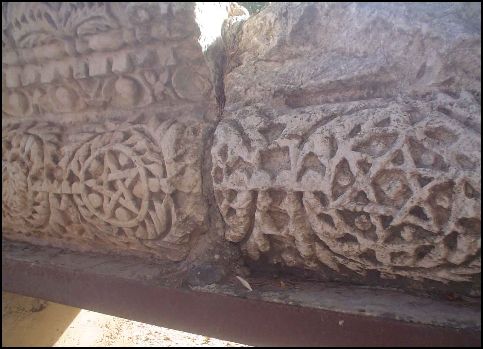The Fayum Oasis district, just a few kilometers outside the boundary of the Memphis Nome, presents a site of unusual interest. It was in that lush, fertile valley that Pharaohs calling themselves the "masters of the royal hunts" fished and hunted with the boomerang (1), Lake Moeris once bordered the Fayum Oasis and on its shores was the famous Labyrinth, described by Herodotus as "an endless wonder to me".
There I saw twelve palaces regularly disposed, which had communication with each other, interspersed with terraces and arranged around twelve halls. It is hard to believe they are the work of man, The walls are covered with carved figures, and each court is exquisitely built of white marble and surrounded by a colonnade. Near the corner where the labyrinth ends, there is a pyramid, two hundred and forty feet in height, with great carved figures of animals on it and an underground passage by which it can be entered. I was told very credibly that underground chambers and passages connected this pyramid with the pyramids at Memphis.
Many ancient writers supported Herodotus' record of underground passages connecting major pyramids, and their evidence casts doubt on the reliability of traditionally presented Egyptian history. Crantor (300 BC) stated that there were certain underground pillars in Egypt that contained a written stone record of pre-history , and they lined access ways connecting the pyramids.
This entrance, obstructed in our day by sands and rubbish, may still be traced between the forelegs of the crouched colossus. It was formerly closed by a bronze gate whose secret spring could be operated only by the Magi. It was guarded by public respect, and a sort of religious fear maintained its inviolability better than armed protection would have done. In the belly of the Sphinx were cut out galleries leading to the subterranean part of the Great Pyramid.These galleries were so art-fully crisscrossed along their course to the Pyramid that, in setting forth into the passage without a guide throughout this network, one ceasingly and inevitably returned to the starting point.
"an underground place... entered through a tunnel, its entrance hidden by sand and by what they call Huwana... his teeth as the teeth of a dragon, his face the face of a lion".
Local 19th-century Arab lore maintained that existing under the Sphinx are secret chambers holding treasures or magical objects. That belief was bolstered by the writings of the first-century Roman historian Pliny, who wrote that deep below the Sphinx is concealed the "tomb of a ruler named Harmakhis that contains great treasure", and, strangely enough, the Sphinx itself was once called "The Great Sphinx Harmakhis who mounted guard since the time of the Followers of Horus".










